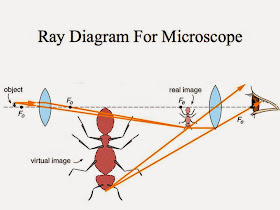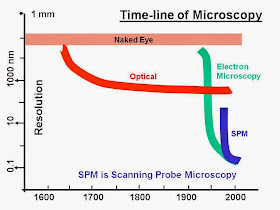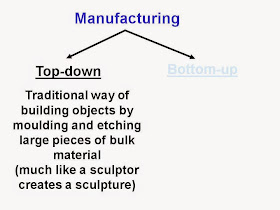Technology: the application of scientific knowledge for practical purposes
We can trace the development of new technologies as in the figure below:
.
One of the features that distinguishes the 20th and 21st Century technologies from historic developments is miniaturization leading to nanotechnology (NT).
Scientific understanding of matter at the atomic level and the development of fast computers have created a knowledge-based society which has helped to improve the quality of life for the vast majority of the human race. An average person now lives with more resources at his disposal than the aristocracy did 200 years ago!
Technology is a double edged sword: it has brought tremendous benefits to people but can also cause great harm. Fire (energy) is great for sustaining our civilization but carries destructive power to burn down our homes and cities.
What has been different in the past 50 years or so is the rate of new technological advancements. The rapid rate of change has created stresses in human societies who are finding the ethical, moral, legal dilemmas difficult to manage. The situation is bound to get much worse in the future. How will we cope? The future is uncertain with hopes and fears for the survival of the human race itself. It is not difficult to appreciate that any one of the new technologies - nano-, bio- or artificial intelligence - is capable of destroying life if used improperly. In any case, the impact of new technologies will be far reaching and how we manage the new knowledge will be of paramount importance. Technological advances can not be reversed - knowledge can not be unlearned - and the way research is done now, it is no longer possible to stop further work in a field.
In a series of blog entries, I plan to address these questions. For my course entitled Nanotechnology 2011 in Scotland, I had discussed many of the new technologies. In order to prepare the background for my blogs, I shall first publish the PowerPoint slides of the lectures here and then take on the subject of how technologies might develop into the future with the main emphasis on how the human societies could be affected by them - for better or for worse. Unfortunately, the slides do not convey the full details of the lectures but are a good reference point for further discussion. (Click on the talk number to view the slides)
Talk 1: The Big Science of the Extremely Tiny
Talk 2: Seeing Nano Objects - Microscopy
Most material in the slides is available in the public domain. For a few of the slides, where I have not been able to acknowledge the source individually, I make a general statement of acknowledgement.






























































